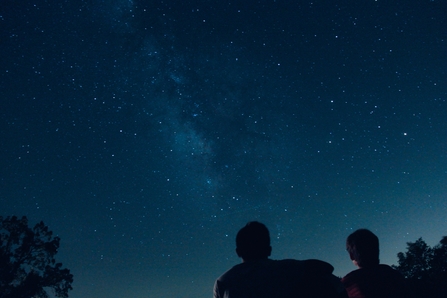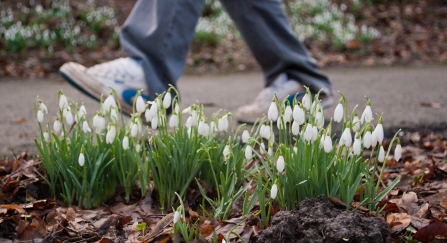What to see and do in January
As winter blankets the ground in a serene layer of frost, nature enthusiasts can still find a plethora of wildlife and plants to discover in our charming region. Despite the chilly temperatures, January offers unique opportunities to witness the incredible resilience of nature. From enchanting birdwatching spots to woodland havens, we have something to captivate every nature lover's heart. Here, we recommend our favourite things to see and do in January.
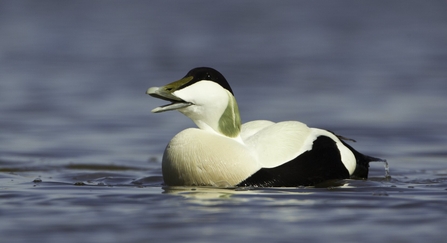
Eider (Somateria mollissima) adult male in spring plumage on water, Scotland, UK - Mark Hamblin/2020VISION
Wrap up warm and go birdwatching
Our wetlands and coastal areas come alive in January with the vibrant activity of various bird species, such as teal, gadwall, wigeon and pochard. Grab your binoculars and head out to Mere Sands Wood to try and spot flocks of wintering ducks, geese, and swans - over 170 bird species have been seen on the reserve. Listen out for the amusing call of the eider duck (they sound like they have just heard a really juicy piece of gossip) or water rail making a noise that sounds like a squealing pig!
If you're very lucky you may spot a bittern in the reeds at Brockholes or Lunt Meadows. It is probably still too early in the year to hear their distinctive boom so come back in the spring to find out why they are Britain's loudest bird!
Did you know? Bitterns were completely wiped out in Britain due to destruction of their reedbed habitats. Regeneration sites like Brockholes and Mere Sands Wood provide the ideal habitat for this rare and well-camouflaged bird.
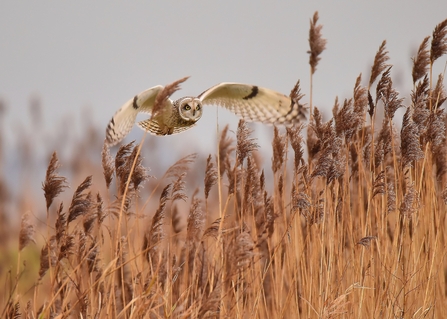
Russell Finney Photography
Go owl spotting!
Our reserve at Lunt Meadows is an excellent place to watch barn owls and short-eared owls as they fly over the water. If you’ve never seen a barn owl before, then winter can be a great time of year to look, as they often extend their hunting hours into daylight to find the extra food they need to get them through the colder months. Short-eared owls are daytime hunters who particularly love the flooded meadows at Lunt.
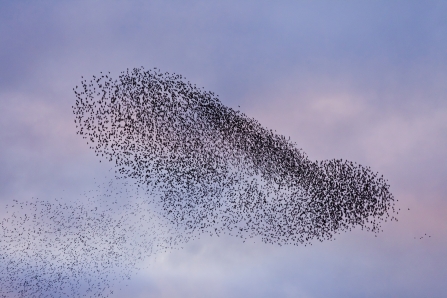
Guy Edwardes/2020VISION
Watch an incredible bird display
Several hundred lapwings dancing and flashing black and white is a spectacular sight - our reserves at Lunt Meadows, Brockholes and Wigan Flashes are great places to see this. You may also be treated to the romantic courtship display from a pair of great crested grebes which always attracts plenty of photographers trying to capture the heart shape made by the grebes' delicate necks. And, of course, the starlings put on a fabulous display at dusk when several flocks will come together in a murmuration - it's one of the best and easiest wildlife spectacles to enjoy due to the fairly regular timing. For your best chance, grab yourself a warm cuppa and gather on the Visitor Village at Brockholes just before sunset.
Did you know? Grebes have beautiful head plumage which was used to decorate the hats of fashionistas in the 19th century. This sad practice lead to these birds becoming almost extinct but, thankfully, they are fairly widespread today.

Join a Nature Tots session
Take part in a fun Nature Tots session at our Heysham, Brockholes or Mere Sands Wood reserves. Let your little ones get in touch with nature with our perfectly tailored sessions for pre-school children. Each session has a different theme and activities include nature art, story time, bug hunts, games, crafts and much more!
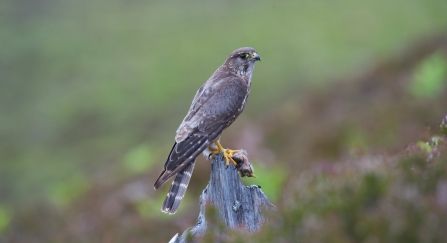
Rob Jordan/2020VISION
Watch hunting birds of prey
Our nature reserves are brimming with life even in the heart of winter, making them excellent places to watch hungry birds of prey hunt. Look out for merlins and peregrine falcons patrolling the shore at Heysham or see kestrels, common buzzards, sparrowhawks and marsh harriers scour the wetlands at Lunt Meadows.
Winter on Chat Moss by Dave Steel
Try to identify trees in winter
Ancient woodlands hold their own magic in winter. The crisp air and the crunch of frost underfoot create a serene atmosphere as you explore the diverse flora that thrives in the colder months. Walk through Boilton Wood at Brockholes or Mere Sands Wood and try to identify the winter trees - it's trickier without their leaves but there are still clues such as leaf buds, bark patterns and layout of branches. Also keep an eye out for Brockholes' resident roe deer, which can often be spotted in the surrounding meadows.
Explore the skies, with a pie supper
Join us for an exciting talk by local astrophotographer, Lee Hunt, where he’ll take you on a virtual journey through the night skies of Lancashire, from our planetary neighbours to distant galaxies. We'll serve a delicious pie and peas supper during the break.
Go for a wintry walk to spot snowdrops
The snowdrop is a familiar spring flower, coming into bloom in January and flowering until March. Despite its long history in the UK, however, it may not actually be native here; it is a native of damp woods and meadows on the continent, but was not recorded as growing wild in the UK until the late 18th century. Nevertheless, it has certainly become naturalised from garden escapees, and white snowdrop 'valleys' can now be seen across the country. Look out for them on your winter walks and you will no doubt spot these nodding little flowerheads.
Did you know? In Yorkshire, it was customary for village maidens to gather bunches of Snowdrops and wear them as a symbol of their purity on February 2nd, which was Candlemas - the feast of the Virgin Mary.

